EN
Nikkei Chronicles #10—Nikkei Generations: Connecting Families & Communities
In Conversation with Japanese-Australian artist Elysha Rei
Brisbane-based artist Elysha Rei’s bold paintings and intricate paper cuttings draw upon her Japanese heritage. Her grandmother Akiko was raised in Osaka until her father died when she was 12, as well as Tokyo and Manchuria. She was working as a typist just after the war when she met Glen an Australian soldier stationed in Iwakuni as part of the British Commonwealth Occupation Forces. The two fell in love and married in 1948. They had their first daughter in Japan – Elysha’s aunt, Patricia. Glen wished to leave the army and move to Australia with his new family, but this wasn’t possible until the Australia Government, in 1952, approved the entry of Japanese wives and fiancées of servicemen to Australia. Glen returned to Australia in 1952 and Akiko and baby Patricia followed, arriving in August 1953 on the second ship carrying ‘war brides’. On the ship bound to Australia, Akiko met dozens of other Japanese wives and their children. She became lifelong friends with many of these ‘war brides’ as they all forged a new life in a strange land.
* * * * *
Please share your grandmother’s experience migrating to Australia.
It's been close to 70 years since Obaachama arrived in Australia. She is 94 this year and lives on the Northern end of the Gold Coast in the state of Queensland. She raised four children including my mother, Jan, born in 1954, then Aunt Robyn arrived in 1956 and Uncle Anthony in 1965.
I visit her as often as I can, bringing my two sons to see their great-grandmother. Her short-term memory is failing, but her long-term memory serves some wonderful stories. When she was living in ‘country’ Brisbane in the ’50s and ’60s, she used to practice her English phrases before going to the shops. “One pound of chuck steak, please,” she would repeat to herself before heading into the butchers. And with no Asian grocers at the time, she improvised by making ‘soy sauce’ out of watered-down Vegemite [a popular toast spread in Australia].
I’ve only just learnt what a difficult time this was for many war brides. If their husband’s family wasn’t welcoming, it made life extremely difficult. There are stories of women who committed suicide. My grandmother was lucky her Australian family and close friends were very embracing. She always spoke highly of my Australian great-grandmother [Glen’s mother], who took her under her wing, as well as friends and family who lived in Brisbane.
She remained especially close with other Japanese wives who had also married Australian soldiers. Some family members in Japan didn’t speak to Obaachama for more than 20 years after she married my grandfather. She remained in regular contact with several siblings via letters, as this was the only form of communication accessible at the time.
It wasn’t until Expo 1970, held in Osaka, that Obaachama travelled to Japan with my Uncle Anthony where she reunited with them. A few years later when my grandfather Glen was posted in Tokyo in 1975 along with Obaachama, Aunty Robyn, and Uncle Anthony, one particular Japanese Uncle didn’t ask them into the house during a family visit, but his wife and daughters have always been friendly.
After some time living in Canberra, the family moved back to Brisbane, where my grandmother became a tutor for Professor Joyce Ackroyd in the University of Queensland’s new department of Japanese Language and Literature in 1966. She was the only person who could operate a Japanese typewriter. She has such fond memories of this time and speaks highly of Professor Ackroyd, who convinced the Queensland Government to trial Japanese language classes in Queensland schools in 1967. This ultimately led to its inclusion in the school curriculum, where I eventually learnt Japanese in high school, and now my eldest son is about to begin studying the language when he commences high school next year. It’s incredible to think my grandmother was one of two teachers who pioneered this program!
How has your Japanese heritage trickled down to your work?
I first developed an interest in my Japanese heritage was when I was preparing for a speech competition at 8 years old. The theme was ‘family’, and I chose to speak about an ancestor from my father’s side who was a convict on the First Fleet to Australia in 1788, and a Japanese samurai ancestor on my mother’s side. At the time, I was attending a Japanese joint-venture school in Wellington, New Zealand. As part of this program, we had Japanese lessons alongside the New Zealand curriculum, and we were forbidden to stand and eat during lunch (as in Japanese schools), and in assemblies we had to sit in vertical, rather than horizontal, lines.
About the same time, I found out my grandmother had lived near Hiroshima in 1945 and was a student at school who was sent to work in an ammunition factory on rotation. The day of the bomb she swapped her shift with a dear friend, who perished in the explosion. We found her friend’s name engraved at the Memorial Peace Park in Hiroshima when we visited in 1998. Finding out about this atrocity was a formative moment.
My school learnt about Sadako Sasaki – a girl who survived the Hiroshima atomic bomb at age 2 only to die 10 years later from radiation poisoning. The students in my school made 1000 origami cranes, which symbolize peace and hope. I continued to make paper cranes throughout my childhood. Sitting in restaurants, I used to make them out of serviettes or receipts, seeing how small I could fold them. Since then, I have been creating artworks out of paper.
This part of my life was when my connection to Japan began. It sparked a curiosity that has continued to fuel my work. I have studied Japanese woodblock prints which have inspired my superflat paintings, and the art of papercutting, or kiri-e, utilizing the beauty of nature and pattern to create installations and hand-cut designs. Over 16 years of arts practice, this visual language has grown into a distinct artistic identity, now underpinned by a sense of purpose with my family’s heritage.
How does your sense of “Japanese-ness” compare to your mother’s and grandmother’s?
My sense of Japanese-ness has strengthened considerably since my twenties when I became a mother. It really brought home the importance of family, and the sense of duty as a parent, and later as an ancestor. I have done lots of self-reflection and research and come to realize that this part of my cultural heritage has always played a role with my identity.
My mother’s sense of this is very different. Having grown up in post-war Australia, she had fewer opportunities to embrace this part of her heritage. My grandmother was learning English, so Japanese wasn’t often spoken at home. Many families in Australia were still hurting from the atrocities of war, and Japan was still seen as the enemy for a period of time. As a result, my grandmother worked hard to completely assimilate into the Australian way of life, and my mum didn’t feel the need to embrace her connection to Japan. In fact, she has told me she’s learnt so much about our Japanese family history through my research and artworks!
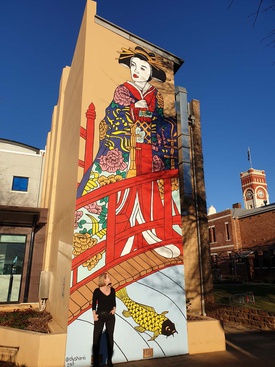
In 2018 I was awarded an Asialink Arts Residency, which enabled me to travel to Japan and complete an artist residency in Kyushu for 6 weeks, then hold an exhibition in Tokyo. In Kyushu I met my great-aunt, Mie, and her relatives for the first time. I was completely embraced and felt a true sense of family. Mie-san was 95 years old at the time. She passed away a couple of years later.
She and my grandmother had been very close. As the older sister, she became a mother figure when their actual mother passed away. Mie-san was nine and Obaachama was five when their mother suddenly died from a brain aneurysm. When I visit my grandmother now, she tells me her sister comes to visit her in her dreams.
After completing my studio residency in Kyushu in 2018, I travelled towards Tokyo for my exhibition. Before my trip, my grandmother had mapped out places of interest where she had met my grandfather, as well as places connected to our samurai ancestor Katagiri Katsumoto. I made a point to visit all these places as I travelled towards Tokyo, sending my heavy suitcase ahead and travelling lightly with a small backpack through the Japanese countryside, surprising the locals in remote locations.
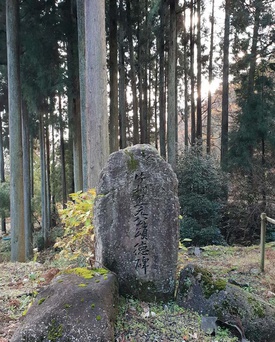
At a small museum in Gosenken Nagahama, the curator revealed that our samurai ancestor didn’t have any children. Instead, his lineage had been passed down to his younger brother, meaning he was in fact our ancestral uncle. The curator gifted me a book that revealed that one of our direct ancestors was a famous tea master, Katagiri Sekishu. He was the nephew of samurai Katagiri Katsumoto. The curator told me I was very close to the birthplace of the samurai and gave me a hand-drawn map. I followed his directions and came across a monumental stone with his name inscribed on it. It was hidden in a beautiful forest, bathed in a spot of sunlight, just waiting for me to discover. I will never forget that moment.
How does your Japanese identity sit alongside your Australian identity?
My formative years were spent in New Zealand and Thailand due to my father’s work as a health consultant, so my connection to Australia only began when we moved to Queensland in my last few years of high school. Since then, I have lived once more in Thailand and Japan, so my life has always involved travel and change. I only started to identify as Japanese-Australian, rather than just Australian, about five or six years ago when I returned to Australia on a more permanent basis.
It was also when I learnt more about my incredible family history – both modern and ancestral – and I realized my Japanese heritage is an important part of who I am. I even found myself channeling the strength of my samurai ancestor when I was battling breast cancer in my early thirties, three years ago.
At first glance most people don’t believe me when I tell them my grandmother is Japanese. My dark blonde hair and green eyes are not what you’d expect for someone with Asian heritage. Talking numbers is the other side of cultural identity – I’m a quarter Japanese. Is that enough to be considered Japanese-Australian? Some may argue it’s not, but for me to deny that quarter of my existence is to pretend half my mother and all my grandmother don’t exist. Instead, I hold onto this part of me with strength and pride now, nurturing and protecting it. I finally feel I have ownership over our story, and my family’s blessing to share it and leave a legacy for my children.
Bibliography
Alumni News (University of Queensland). “40 Years of Promoting Australian and Japanese Ties.” 16, no. 1 (1984): 6-7
Know Japan, Issued under the direction of the Commander-in-Chief, British Commonwealth Occupation Forces, 1946
Robertson, J. “Furusato Japan: The culture and politics of nostalgia.” International Journal of Politics, Culture, and Society 1, 494–518 (1988).
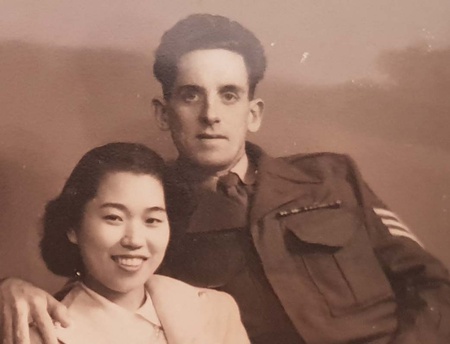
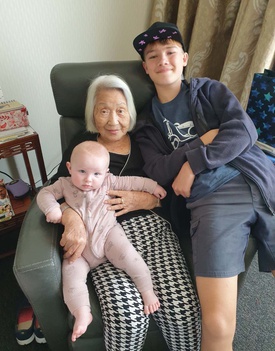
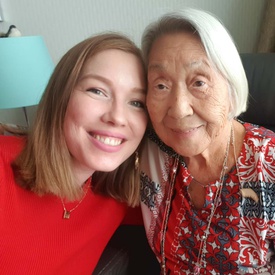
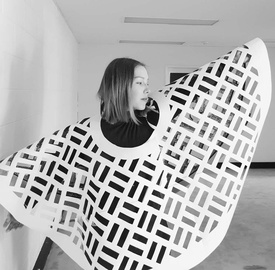
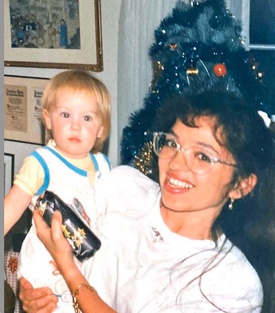
No comments:
Post a Comment